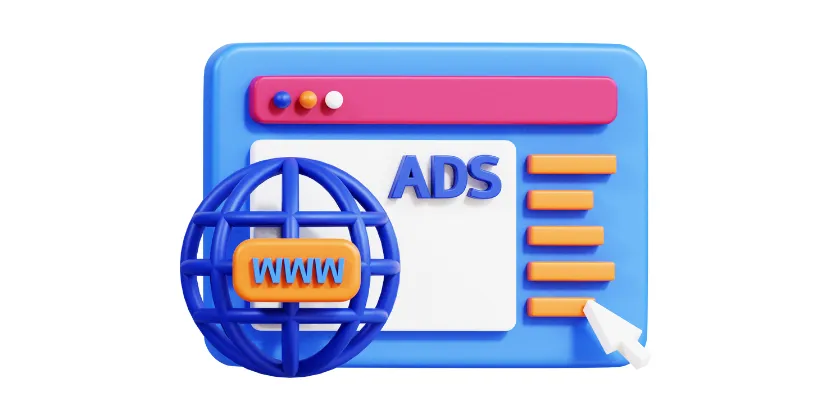
Introduction
For bloggers and website owners, getting approved by Google AdSense often feels like the golden ticket to monetizing their hard work. AdSense is one of the most trusted ad networks, and once approved, it can generate steady income through website traffic. But here’s the reality—getting approval isn’t always easy. Many new website owners face rejection, sometimes repeatedly, without really knowing why.
This blog aims to dig deep into the most common issues that prevent Google AdSense approval and provide you with practical solutions to fix them. Whether you’re running a blog, a news portal, or a niche website, understanding these challenges will save you time and frustration. By the end, you’ll know exactly what steps to take to increase your chances of getting approved.
Understanding Google AdSense
Before jumping into the reasons for rejection, it’s important to understand what Google AdSense is and why it’s so particular about approving sites.
Google AdSense is an advertising platform that allows publishers to display ads on their websites and earn revenue based on clicks or impressions. It’s essentially a bridge between advertisers and website owners. Advertisers pay Google to run ads, and Google shares a portion of that revenue with publishers.
But here’s the catch: Google wants to protect advertisers. That means they only allow websites that are safe, high-quality, and compliant with their policies. If your website doesn’t meet these standards, Google will likely reject your application.
So, if you’re serious about earning money through blogging or content creation, knowing what Google looks for—and fixing what’s missing—becomes essential.

Common Issues for Not Getting Google AdSense Approval
1. Low-Quality Content
One of the biggest reasons Google AdSense applications get rejected is poor-quality content. If your blog posts are short, copied from other websites, or lack depth, Google won’t approve your site. Think about it: why would advertisers want their ads to appear on a site that doesn’t offer value to readers?
Low-quality content includes:
- Thin articles with less than 300 words
- Posts filled with grammatical errors
- Plagiarized or duplicate content from other sites
- Articles that don’t provide useful information
Google values unique, well-structured, and detailed content. If you’re just rewriting existing posts without adding originality, that’s a red flag. The solution is simple but requires effort—create long-form, in-depth articles that genuinely help your audience. Instead of 5 short posts, aim for 10–15 well-researched ones that cover your niche thoroughly.
2. Website Design and Navigation Problems
Even if you have great content, your website’s design can make or break your chances of approval. If your site looks cluttered, unprofessional, or difficult to navigate, Google might reject it.
Issues include:
- Using outdated or broken themes
- Too many ads or pop-ups (before approval)
- Hard-to-read fonts and poor color schemes
- Non-responsive design that doesn’t work on mobile
Remember, Google wants a positive user experience. If visitors leave your site within seconds because it looks unprofessional, advertisers lose potential customers.
To fix this:
- Use a clean, responsive theme (WordPress has many free ones).
- Ensure menus are clear and easy to use.
- Test your site’s mobile-friendliness using Google’s tool.
- Optimize loading speed—slow sites often get rejected.
Your website should feel trustworthy and professional at first glance. Think of it as your online store—you want visitors to stick around, not leave immediately.
3. Insufficient Content or Low Word Count
Another major issue is applying too early, before your site has enough content. Google wants to see that your site is established, not just a placeholder. Submitting a site with only three posts of 200 words each is a recipe for rejection.
Google prefers websites with:
- At least 15–20 high-quality posts
- Articles of 800–1500+ words each
- Content that covers a variety of topics in your niche
Short articles not only hurt SEO but also give the impression that your site isn’t serious. If you haven’t built enough content yet, hold off on applying. Focus on writing long, detailed posts that solve problems for your readers.
A good strategy is to build your site for at least 2–3 months before applying. That way, you’ll have a solid base of content, some organic traffic, and a better chance at approval.
4. Policy Violations and Restricted Niches
Google has strict policies, and violating them is an instant rejection. Many beginners unknowingly pick niches that are restricted, such as:
- Adult content
- Gambling and betting
- Hacking or illegal downloads
- Drugs or banned products
Even if your content is well-written, Google won’t approve a site in these niches. Another common mistake is ignoring AdSense policies like keyword stuffing, misleading content, or promoting dangerous products.
The best solution is to choose a safe and advertiser-friendly niche. Think about topics like technology, health, finance, education, travel, or lifestyle—these niches are evergreen and highly monetizable.
Always read Google’s AdSense Program Policies before applying. It’s better to avoid restricted topics early than to get rejected after months of hard work.
5. Domain Age and Website Ownership
In some countries, Google requires your domain to be at least 6 months old before applying. While this isn’t a global rule, it’s still an important factor. A brand-new site with little history may struggle to get approval.
Other issues include:
- Applying with a free domain (like Blogspot.com or WordPress.com). Google prefers custom domains (e.g., yoursite.com).
- Incomplete ownership verification. You must prove that you own the domain.
To fix this:
- Always invest in a custom domain—it builds trust.
- Keep your site active with consistent updates for at least 3–6 months.
- Verify your domain ownership in Google Search Console.
This shows Google that you’re serious about building a long-term site, not just testing the waters.
Technical Issues That Lead to Rejection
6. Website Not Indexed on Google
Imagine applying for AdSense when Google doesn’t even know your website exists—that’s exactly what happens if your site isn’t indexed. Google checks whether your content appears in its search results before approving ads. If your site isn’t indexed, it signals that either you haven’t submitted it for indexing, or there are technical issues preventing Google’s crawlers from accessing it.
Here’s why indexing is important:
- Google AdSense relies on indexed pages to display relevant ads.
- If your site isn’t indexed, it means no visibility and no proof of legitimacy.
- It shows Google your site hasn’t been properly set up yet.
How to check indexing? Simply type site:yourdomain.com into Google. If no results appear, your site isn’t indexed.
Fixing this involves:
- Submitting your sitemap in Google Search Console.
- Avoiding “noindex” tags in your website’s code.
- Removing duplicate or thin pages that block indexing.
- Building backlinks so Google finds your site faster.
Until your site is indexed, AdSense approval is nearly impossible.
7. Lack of Important Pages
Another silent killer of AdSense approval is missing essential pages. Google wants to see that your site is professional, transparent, and trustworthy. If your site doesn’t have the basic pages that every credible website should, it looks incomplete.
Must-have pages include:
- About Us Page: Explains who you are and what your site is about.
- Contact Page: Shows visitors (and Google) how they can reach you.
- Privacy Policy Page: Required by AdSense to ensure compliance with data regulations.
- Disclaimer/Terms of Service Page: Protects you legally and clarifies your site’s intent.
Why does this matter? Because advertisers want to appear on sites that look professional, not hobby projects. Missing pages suggest your website isn’t legitimate or serious.
To fix this, create these pages before applying. You don’t need to write 2,000 words for each—just clear, well-structured content that adds credibility to your site.
8. Copyrighted Material or Duplicate Content
Google is very strict when it comes to originality. If your site uses copied images, videos, or text without permission, it’s a fast track to rejection. Many beginners think they can just copy-paste articles or use stock photos without licenses, but Google’s bots and reviewers can spot this instantly.
Common mistakes include:
- Using images from Google search without credits.
- Copying text from competitors’ sites.
- Reusing videos or infographics without proper permission.
Fixing this requires:
- Writing all content in your own words.
- Using free resources like Unsplash or Pexels for copyright-free images.
- Running your content through plagiarism checkers (like Copyscape or Grammarly).
Google rewards originality. If you want approval, your content must not only be unique but also genuinely valuable to readers.
9. Poor Traffic Sources
While Google doesn’t demand huge traffic numbers for AdSense approval, it does care about how you’re getting that traffic. If most of your visitors are coming from paid bots, traffic exchange sites, or spammy backlinks, that’s a red flag.
Here’s why traffic quality matters:
- Advertisers want real human audiences, not fake clicks.
- Poor traffic sources may trigger invalid click activity.
- Google tracks user behavior—fake traffic usually results in unusually high bounce rates.
To fix this:
- Focus on organic traffic through SEO.
- Use social media platforms (like Pinterest, Twitter, or LinkedIn) to bring real visitors.
- Avoid purchasing traffic packages promising thousands of visits—they’ll hurt you in the long run.
Even with 100–200 daily genuine visitors, you can still get approval. It’s not about numbers; it’s about quality.
10. Multiple AdSense Applications or Accounts
Another issue that confuses many new publishers is Google’s one-account policy. If you already have an AdSense account (approved or not), trying to apply again with a different email or site can cause automatic rejection.
Problems include:
- Applying multiple times without fixing issues.
- Having an old suspended account linked to your details.
- Using the same payment details across multiple accounts.
The solution is simple:
- Stick with one account per person.
- If you’re rejected, improve your site and reapply with the same account.
- If your account was disabled, don’t try creating a new one—appeal instead.
Google tracks user information closely, so trying to “game the system” usually backfires.

How to Fix AdSense Approval Issues
11. Improve Content Quality
The heart of AdSense approval is content. Without strong, valuable articles, nothing else matters. If your site was rejected, the first thing to check is whether your content is engaging, original, and user-focused.
Here’s how to improve content quality:
- Write long-form articles (1,000–2,000+ words) that solve real problems.
- Use headings, bullet points, and images to make articles easier to read.
- Research keywords and optimize naturally (avoid stuffing).
- Update old posts to keep them fresh and relevant.
Think of your content as the product, and AdSense as the distributor. If the product is weak, no distributor will take it on. But if it’s valuable, approval becomes much easier.
A good rule of thumb: if your site has fewer than 15–20 strong posts, keep writing before applying.
12. Optimize Website Design and Performance
Having excellent content is one piece of the puzzle, but your website’s design and performance are equally important for AdSense approval. Think of your website as a digital shop. No matter how great your products (content) are, if the store looks messy, loads slowly, or isn’t mobile-friendly, customers (and Google) won’t be impressed.
Key aspects to optimize include:
- Mobile Responsiveness: More than half of internet users browse on mobile. If your site doesn’t adjust properly on smaller screens, visitors bounce quickly. Use responsive themes and test your site with Google’s Mobile-Friendly Test tool.
- Website Speed: Slow sites kill user experience. Compress images, use caching plugins, and consider a lightweight theme. Tools like Google PageSpeed Insights or GTmetrix can show what’s slowing your site down.
- Clean Navigation: Visitors (and AdSense reviewers) should easily find categories, posts, and important pages. Confusing menus or too many pop-ups are instant turn-offs.
- Professional Look: Avoid flashy fonts, mismatched colors, or outdated templates. A neat, modern, and simple design always wins.
Remember, Google is all about user experience. If your site feels cluttered or difficult to navigate, approval becomes harder. A simple, clean design that loads fast and works across devices can drastically improve your chances.
13. Build Organic Traffic
Google AdSense approval doesn’t require millions of visitors, but it does care about genuine traffic. If your website has zero engagement or all its traffic comes from spammy sources, your application may be rejected.
The best way to fix this is by focusing on organic traffic—visitors who find you naturally through search engines or genuine referrals.
Here’s how to build it:
- SEO Optimization: Use proper keyword research to target what people are searching for. Optimize titles, headings, and meta descriptions.
- Content Marketing: Publish high-value content consistently. Think tutorials, guides, listicles, and problem-solving articles.
- Social Media Promotion: Share your posts on platforms like Facebook, Instagram, LinkedIn, or Pinterest to drive initial traffic.
- Backlinks: Build authority by getting other websites to link back to you. Guest posting and collaborations work well here.
Even with just 50–200 daily visitors, you can get approved if those visitors are genuine. Quality beats quantity when it comes to traffic for AdSense.
14. Ensure Full Compliance with Policies
AdSense has a long list of policies, and even a single violation can ruin your chances of approval. Many applicants get rejected simply because they never bothered to read the rules.
Here are some non-negotiable compliance checks:
- Avoid Restricted Content: No adult, gambling, pirated software, or violent material.
- Safe Browsing: Your site must not host malware, phishing content, or harmful downloads.
- Clear User Intent: No misleading or clickbait tactics that trick users.
- Data Privacy: Your site must disclose how you collect and use visitor information (hence the Privacy Policy page).
Before applying, carefully review Google’s AdSense Program Policies. Following them not only improves approval chances but also ensures long-term sustainability.
15. Reapply for AdSense After Fixing Issues
If you’ve faced rejection, don’t lose hope. The good news is you can reapply for AdSense once you’ve fixed the issues. But here’s where many go wrong—they reapply too soon, without addressing the problems.
Steps to reapply successfully:
- Read the Rejection Email: Google usually gives a reason for disapproval. Take it seriously.
- Fix All Issues: Whether it’s content, design, traffic, or missing pages, don’t skip anything.
- Wait a Few Weeks: Give your site some time to grow with fresh content and traffic.
- Reapply with Confidence: Use the same AdSense account, resubmit your site, and ensure everything looks professional.
A smart move is to create a checklist before reapplying:
- At least 20 long-form, original articles
- Essential pages (About, Contact, Privacy Policy)
- Clean, responsive design
- Indexing verified in Google Search Console
- Steady flow of genuine traffic
Once these are in place, your chances of approval go up significantly.
Conclusion
Getting Google AdSense approval is not as easy as just launching a website and applying. It requires effort, patience, and consistency. Most rejections happen due to avoidable issues like thin content, poor design, missing pages, or policy violations. The good news is every single one of these problems can be fixed.
Focus on creating valuable content, designing a professional-looking website, building genuine traffic, and strictly following Google’s policies. Once you’ve taken care of these fundamentals, AdSense approval becomes much more likely. And remember, persistence pays off—don’t give up after one or two rejections. Many successful bloggers faced multiple rejections before finally getting approved.
So, keep improving your site, reapply with confidence, and soon you’ll be on your way to monetizing your content with Google AdSense.
FAQs
1. How long does AdSense approval take?
Usually, it takes anywhere from 1 to 2 weeks. Sometimes faster, sometimes longer, depending on your site’s status.
2. Can I reapply if my application gets rejected?
Yes. You can reapply after fixing the issues mentioned in the rejection email. Make sure to wait a few weeks before trying again.
3. Do I need a custom domain for approval?
Yes, a custom domain (like yourwebsite.com) is highly recommended. Free subdomains often get rejected.
4. How much traffic is required to get AdSense?
There’s no fixed requirement, but having at least 50–200 daily genuine visitors improves your chances.
5. What happens if my site gets approved but later violates policies?
Your account may get suspended or permanently banned. Always follow AdSense guidelines to avoid losing approval.













